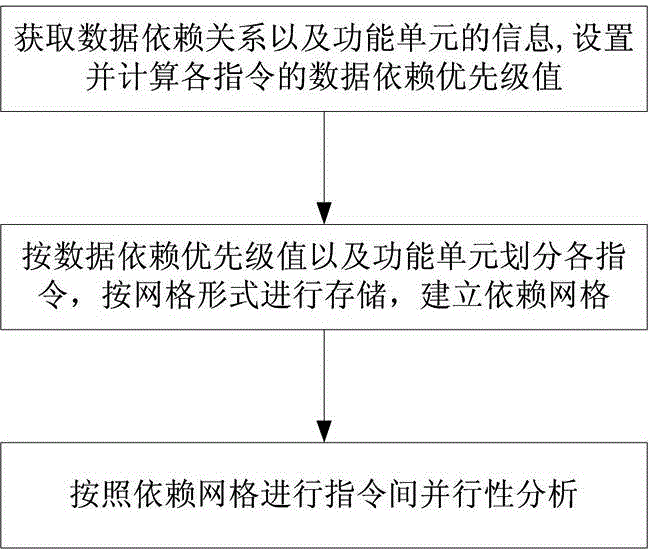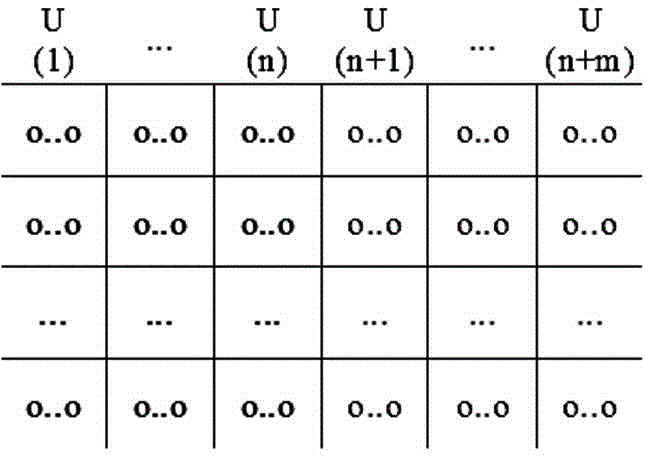Dependency mesh based instruction-level parallel scheduling method
A scheduling method and instruction-level technology, applied in the field of compilation optimization, can solve the problems of not reflecting the correlation, not reflecting the relationship between instructions and functional units in real time, and not showing other correlations between instructions, so as to achieve the effect of improving parallelism
- Summary
- Abstract
- Description
- Claims
- Application Information
AI Technical Summary
Problems solved by technology
Method used
Image
Examples
Embodiment Construction
[0040] The present invention will be further described below in conjunction with the accompanying drawings and specific preferred embodiments, but the protection scope of the present invention is not limited thereby.
[0041] Such as figure 1 As shown, this embodiment is based on a grid-dependent instruction-level parallel scheduling method, and the steps include:
[0042] 1) Obtain the data dependency relationship between instructions in the target basic block and the information of the functional unit corresponding to each instruction, set and calculate the data dependency priority value of each instruction according to the data dependency relationship;
[0043] 2) Divide each instruction according to the data dependency priority value and functional unit, store the divided results in the form of a grid, and establish a dependency grid to obtain the dependency relationship between the instruction and data dependency priority, and the functional unit;
[0044] 3) According t...
PUM
 Login to View More
Login to View More Abstract
Description
Claims
Application Information
 Login to View More
Login to View More - R&D
- Intellectual Property
- Life Sciences
- Materials
- Tech Scout
- Unparalleled Data Quality
- Higher Quality Content
- 60% Fewer Hallucinations
Browse by: Latest US Patents, China's latest patents, Technical Efficacy Thesaurus, Application Domain, Technology Topic, Popular Technical Reports.
© 2025 PatSnap. All rights reserved.Legal|Privacy policy|Modern Slavery Act Transparency Statement|Sitemap|About US| Contact US: help@patsnap.com



